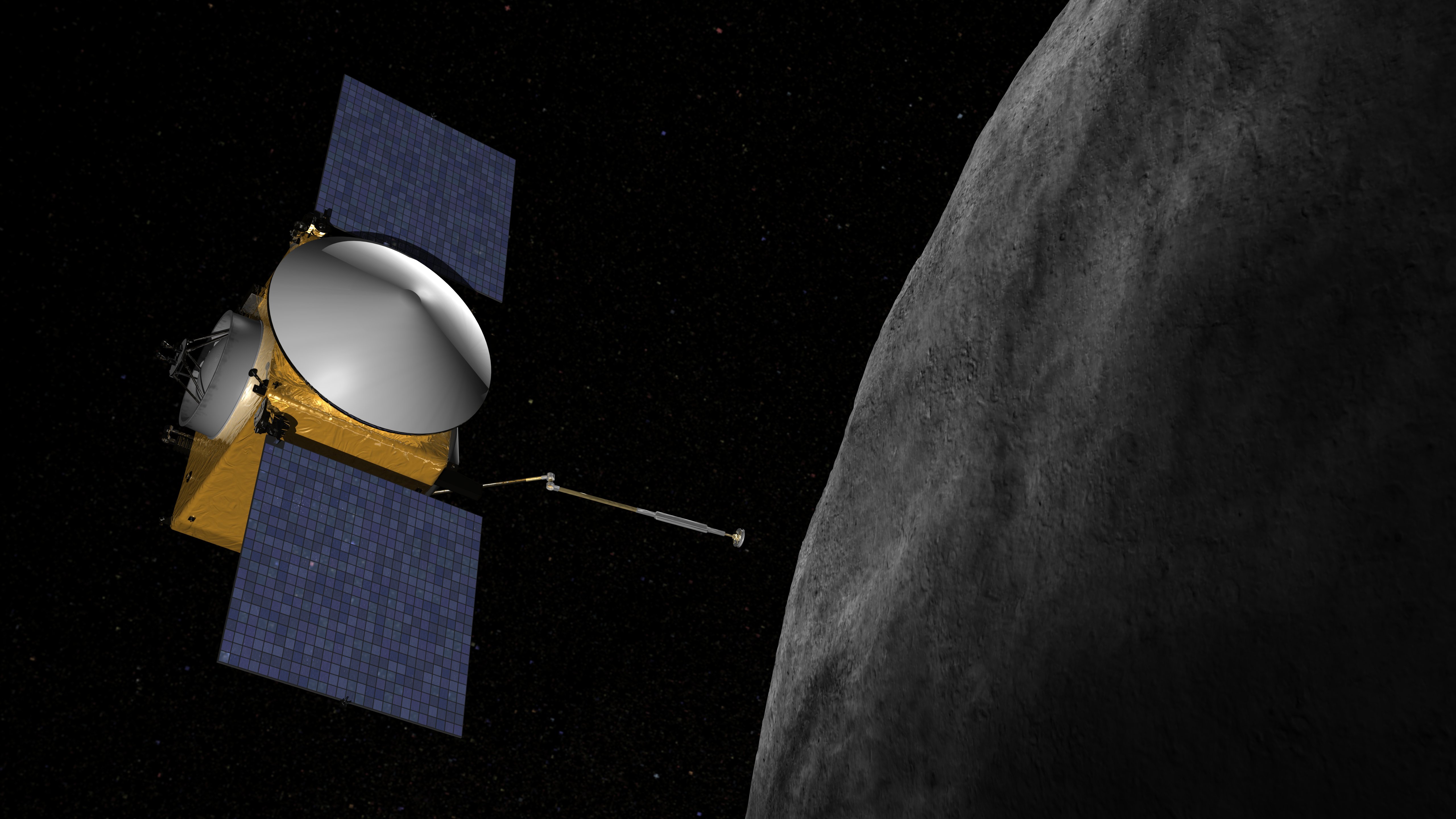NASA OSIRIS-REx mission is on its way to the asteroid Bennu. Credit: NASA
Asteroids are thought to be responsible for the dinosaurs extinction. Thousands of asteroids are lurking in the close proximity to the Earth, threatening the mankind with the same fate (you can learn more about asteroid monitoring and impact prevention in our previous blog post). Most asteroids, though, are situated much further away from us, in the Asteroid Belt between the orbits of Mars and Jupiter. But even those rocks can be slingshot by the Jupiter’s gravity and sent on the collision course with our planet. And that’s definitely bad news!
Studying asteroids
Asteroids are not all that terrible and dangerous. They can help us solve the mystery of the formation of the Solar System and answer questions about the birth of the planets (and maybe even the origin of life). Asteroids were formed at the same time as rocky planets and contain the same material as the newborn Solar System. The planets changed quite a lot since their birth, but asteroids remained pretty much the same as they were 4 billion years ago. Therefore, when we study asteroids, we learn all about the conditions in the early Solar System! And the fact that many of these rocks are so close to the Earth makes our job much easier!
A few robotic mission have already been sent to study asteroids. Moreover, two missions are on their way to their respective target asteroids right now. We expect to hear from them as soon the next month. So exciting!
Ongoing missions
- Hayabusa – 2 is an ongoing mission to the Near-Earth asteroid 162173 Ryugu. It was launched by the Japanese Space Agency (JAXA) in 2014. The spacecraft will reach the target in July 2018, study it for 18 month and return to Earth with the samples of the asteroid in 2020. The mission is a follow-up of the previous Hayabusa mission to another asteroid. It will carry pretty much the same instruments as its predecessor. The new parts include a drop-off explosive device that will crash into the asteroid and explode. The explosion will create a small crater and expose the deeper layers of Ryugu for the probe to study and sample.
- OSIRIS-REx is a NASA mission launched in 2016 to explore asteroid 101955 Bennu. Bennu has one of the highest chances to collide with the Earth in the 22 century, so it is time to start learning more about it! Very soon, in August 2018, the “approach phase” of the OSIRIS-REx mission will begin! The spacecraft , unlike Hayabusa -2, will not be landing on the asteroid. Instead, it will use its robotic arm to grab a sample of the rock to bring back to Earth! We expect OSIRIS-REx to return back home with a few kilos of the asteroid material in 2023.
Asteroid mining
Asteroids contain many valuable resources, such as metals and water. In the future we should be able to mine them and bring these materials to the Earth. Alternatively, we can use them in situ. For example, we can use the water from the asteroids to supply space missions with fuel and drinking water. Scientists are already working on the technology that will be capable of harvesting these resources, but it might take a few decades before it becomes a reality.
Not only researches and governments have their eyes on the asteroids and their treasures. Private companies are planning to mine asteroids in the nearest future too! American company Planetary Resources has very ambitious plans to mine the space rocks for water and precious minerals.
Asteroids, here we come!
Asteroid day
June 30 is the Asteroid day. It is a worldwide event aimed to teach about asteroids, the potential threat they pose and what we can do to prevent it.
So…Asteroids, are they friends or foes? You decide!
Still curious?
Read about asteroids, teach about asteroids and visit our space dome to learn more about Space.

